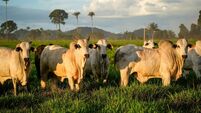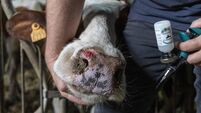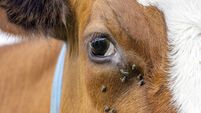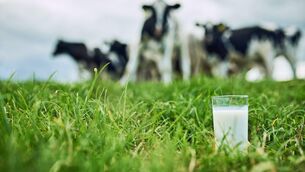Worm burden in sheep needs regular attention
In the report, Michael Gottstein of the Teagasc Animal and Grassland Research and Innovation Programme says virtually all sheep will suffer from a worm burden at some stage, and it is the job of the shepherd to try and contain the infection to a level where acceptable animal performance is achieved. This is where anthelmintics and management practices come in to play.
Over the last few decades, frequent drenching of sheep on intensive sheep farms had been advocated to control parasites and maintain high growth rates in lambs.
In certain situations, these strategies have increased the rate at which the resident worm populations have become resistant to the chemicals in the wormers — which are categorised into five groups:
* Group One (white): Benzimadazoles are the white (sometimes blue) drenches such as Albex, Panacur, Systamex, Valbazen, Curazole, etc.
* Group Two (yellow): Levamisoles are the yellow drenches such as Chanaverm, Levacide, Nilverm, etc.
* Group Three (clear): Macrocyclic lactones/avermectins are clear drenches such as Ivomec, Oramec, Animec, Genesis, etc.
* Group Four (orange): Monepantel is a new product and is available as a prescription-only medicine under the trade name Zolvix.
* Group Five (purple): Derquantel is a new molecule that has been combined with abamectin (group three) and has been launched this year as a prescription-only medicine under the trade name of Startect.
There was a 20-year wait to get the new Zolvix (two years ago) and Startect (this year) products. The last group developed prior to these were ivermectins in the 1980s. We must be careful to manage these new chemicals well.
There are two questions that every sheep farmer should be asking. How effective are the sheep drenches that I am using? How do I prevent or slow down the development of resistance to anthelmintics on my farm?
A good starting point is to identify how effective the various anthelmintics are on the worm populations found on your farm.
The only effective way is to get some dung samples taken and send them to the lab.
The procedure is:
*Identify when the sheep have a worm burden — ideally, take a dung sample.
* Weigh the heaviest sheep in the group and set the dosing equipment to deliver the appropriate dose.
* Check that the dosing equipment is delivering the required amount by squirting 10 doses into a beaker and measure the quantity.
* Drench the sheep carefully, making sure that they fully swallow the drench.
* Seven days later (in the case of Levamisole, group two) or 14 days later (for all other groups), collect dung samples and submit them to the laboratory.
If worm eggs are present, there may be a problem with anthelmintic resistance, and the product should no longer be used.
This faecal egg reduction test can be done in any of the regional veterinary laboratories. Certain private veterinary laboratories also carry out the test.
How do I slow down the development of resistant parasites to anthelmintics on my farm?
There is no way that any farmer can stop the development of anthelmintic resistant parasites on his or her farm, but you can certainly take steps to delay the development of resistance.
(1) Ensure effective (proper) administration of anthelmintics. (weigh sheep and dose according to the heaviest, calibrate the dosing gun and ensure that the dose is given correctly over the back of the tongue.
(2) Only use anthelmintics when necessary — use faecal egg counts to guide you as to when treatment is required.
(3) Use the most appropriate anthelmintic — avoid combined fluke worm drenches unless you have a problem with both parasites.
(4) Reduce the dependence on anthelmintics through mixed grazing, etc.
(5) All bought-in sheep should be treated with both a group four Zolvix and group three macrocyclic lactone sequentially on arrival and kept in quarantine for 48 hours.
(6) Routine worm drenching of adult ewes for pasture hygiene reasons should not be practised, where lambs will be routinely dosed without the use of faecal egg counts. Hogget ewes or individual thin ewes are an exception.
(7) Farmers should be aware that the ‘dose and move’ onto clean pasture strategy is likely to be highly selective for worm resistance. Strategies such as (a) treating lambs several days prior to movement, (b) delaying treatment for several days after the move to clean pasture, or (c) leaving a sub group (10%) untreated might be considered (for example, leave the heaviest/healthiest lambs untreated). Options (a) and (b) would be most appropriate for residual activity products (for example, Cydectin).
(8) Check for anthelmintic resistance regularly (every two years) using the faecal egg count reduction test.
(9) Once resistance to a particular group has been established, stop using that group (except in the case of nematodirus — resistance does not apply to nematodirus).












